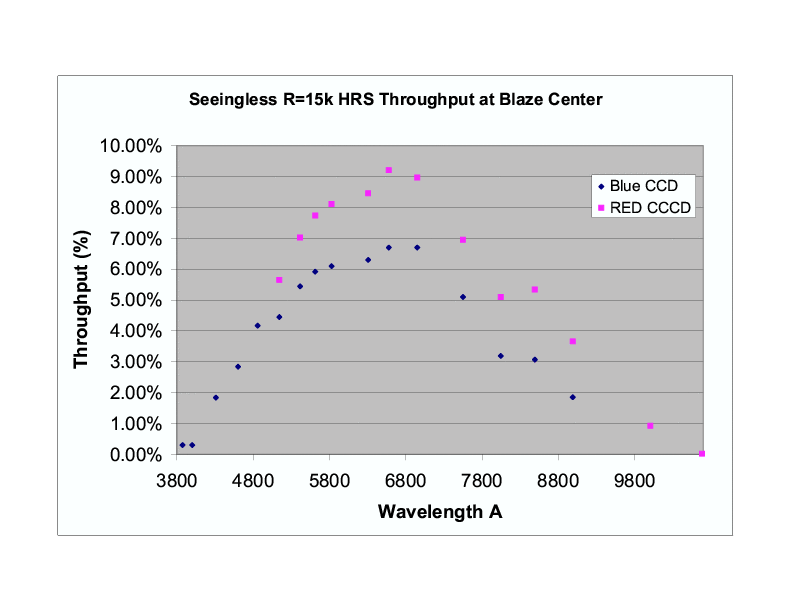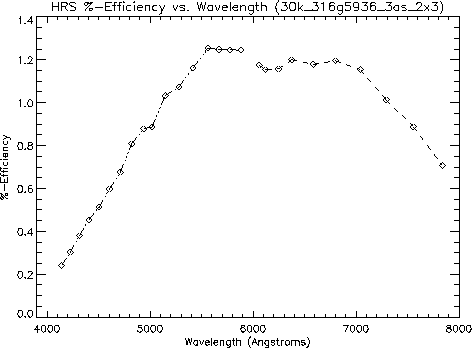
To see the affect of changing exposure times in a moving aperture try the HET Filling Factor Calculator.
The measured throughput for the HRS is given below measured differentially from the LRS using the LRS throughput curve and the LRS cal system. This is a seeing removed and slit removed throughput so please use the throughput calculator given above.

| Configuration | V Mag. | Time | S/N @ Peak of order w/ Wavelength |
|---|---|---|---|
| R=15,000 3" fiber | 14 | 1800 | 100 @ 5800 Å |
| R=15,000 2" fiber | 13.6 | 1800 | 100 @ 5800 Å |
| R=30,000 3" fiber | 12.5 | 1800 | 100 @ 5800 Å |
| R=30,000 2" fiber | 12.1 | 1800 | 100 @ 5800 Å |
| R=60,000 3" fiber | 10.5 | 1800 | 100 @ 5000 Å |
| R=60,000 2" fiber | 10.1 | 1800 | 100 @ 5000 Å |
| R=120,000 3" fiber | 9.3 | 1800 | 100 @ 6440 Å |
| R=120,000 2" fiber | 8.9 | 1800 | 100 @ 6440 Å |
Where S/N is in the Poisson noise limited regime with no sky subtraction. If you work on much fainter objects or with a full moon and some clouds you may get into the sky noise and read noise regime. See the observing tips for HRS.
The above assume that the iodine cell is not being used. Transmission through the iodine cell has been found to be about 70%.
A very nice analysis by George Trammell at PSU of a spectrophotometric standard taken with the R=30k setup under poor seeing IQ=2.3" yields the following throughput at blaze center for each order. Since the image quality was somewhat poor this should be taken with a grain of salt, but the relative throughput of each order should be good. We will attempt to have this analysis redone with new data as soon as we can get a new standard observed under good conditions.
